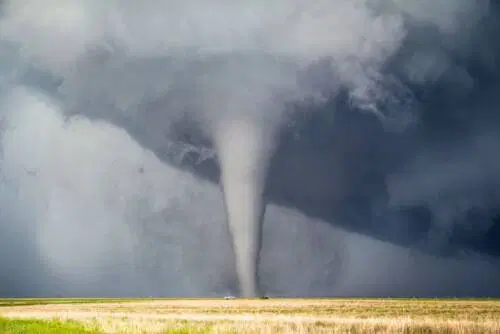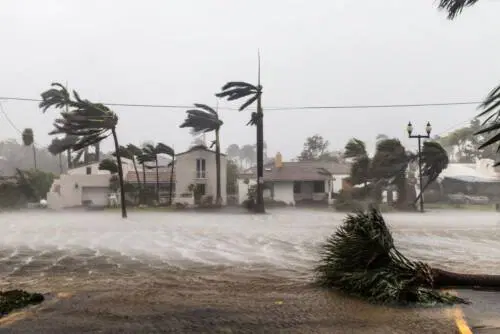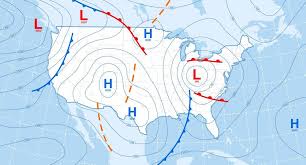Understanding how to read a weather forecast is essential for planning your day, especially when unpredictable weather can have a major impact.
Whether you’re planning a weekend trip, commuting to work, or simply deciding what to wear, knowing how to interpret key weather symbols and terms can make a big difference.
From temperature and precipitation to wind speed and air pressure, each forecast element plays a role in predicting conditions. However, many of these symbols and technical terms can be confusing if you’re not familiar with them.
In this guide, we’ll break down the most commonly used weather symbols and terms, helping you gain the knowledge needed to master weather forecasts and make more informed decisions based on the weather.
Read More: Mastering Weather Forecasts: Understanding Key Symbols and Terms
Reading and Interpreting Weather Forecast: Key Steps
Understanding a weather forecast may seem overwhelming at first, but by following a few simple steps, you can quickly gain confidence in reading and interpreting weather reports. Here’s a step-by-step guide to help you decode the forecast:
Check the Temperature
Start with the most basic element: the temperature. Forecasts typically provide the current temperature, high, and low for the day. Pay attention to whether it’s in Celsius or Fahrenheit, depending on your region.

Understand Precipitation Chances
Look for symbols indicating rain, snow, or other forms of precipitation. The percentage (%) usually indicates the likelihood of precipitation, helping you gauge how likely it is to rain or snow in your area.
Look at Wind Speed and Direction
Wind speed is often displayed with arrows or numbers showing how fast the wind will blow, and direction arrows indicate from which direction the wind is coming. Higher wind speeds could mean a storm or cold front is approaching.
Check the Humidity Level
Humidity levels are an important factor in how we experience temperature. A high percentage means the air is moist, making it feel warmer in hot weather and colder in cold weather.
Examine Pressure Systems
Meteorologists track pressure systems to predict weather patterns. A high-pressure system usually indicates clear skies, while low-pressure systems often bring cloudy, rainy, or stormy weather.
Look for Special Weather Alerts
Pay attention to any special warnings or advisories, such as heatwaves, storms, or snow. These alerts provide more detailed, immediate forecasts for your safety.
By following these steps, you’ll be able to decode weather forecasts quickly and accurately, making better decisions for your daily activities.
Be on the Lookout for Severe Weather
Severe weather can strike unexpectedly, and it’s crucial to stay informed and be prepared. While weather forecasts provide general predictions, it’s important to recognize the signs of extreme conditions that could impact your safety. Here’s what to look out for:
Storm Warnings and Watches
Weather services often issue “watches” or “warnings” for severe conditions. A watch means conditions are favorable for severe weather, while a warning indicates that severe weather is imminent or occurring. Always take warnings seriously and take the necessary precautions.
Severe Thunderstorms
These storms can bring heavy rain, strong winds, hail, and even tornadoes. Pay attention to forecasts that include terms like “severe thunderstorm,” and watch for updates as storms approach.

Tornadoes
Tornadoes can develop rapidly, and a tornado warning usually means that rotation has been spotted in the clouds. Stay in a safe area, such as a basement or an interior room on the lowest floor, and keep an emergency kit ready.

Flooding Risks
Heavy rainfall and rapid snowmelt can lead to flooding, especially in low-lying areas. If you live in a flood-prone area, pay attention to flood warnings and avoid driving through flooded roads.
Extreme Heat or Cold
Heat advisories or warnings indicate extreme temperatures that could be dangerous, especially for vulnerable populations. Cold weather advisories may also signal dangerous wind chills or the possibility of frostbite.
Hurricane or Tropical Storm Warnings
If you’re in a coastal area, be aware of hurricanes or tropical storms. These can cause life-threatening conditions with heavy rain, strong winds, and storm surges. Always follow evacuation orders if issued.

By staying alert to weather alerts and understanding the risks associated with severe conditions, you can take proactive steps to protect yourself and your loved ones. Always have a plan and be ready to act quickly when severe weather is predicted.
Are You Using The Most Accurate Forecasts?
Weather forecasts are invaluable tools for business leaders, enabling them to plan operations, ensure the safety of employees and customers, and make data-driven decisions.
By understanding the layout, symbols, and key elements of common weather forecasts, community leaders and business organizations can confidently interpret data and apply it effectively to their plans and operations.However, the accuracy of the forecast is key.
No matter how well you can read a weather report, it’s not helpful if the forecast itself is inaccurate. That’s why it’s vital for decision-makers to ensure they are receiving the most reliable weather data available.At Climavision, we take accuracy seriously.
We push the boundaries of weather forecasting by developing advanced Numerical Weather Prediction (NWP) Models that are specifically designed to reflect the dynamic and evolving nature of extreme weather patterns in our changing atmosphere.
Our Horizon AI weather forecasting suite includes the Horizon AI Global, HIRES, Point, and Subseasonal to Seasonal models. Whether you need high-resolution short-term forecasts or probabilistic long-term global outlooks, Climavision provides the most precise weather information.
Unlike traditional models that rely on government data, we integrate unique, high-resolution observational datasets into our models, ensuring that the forecasts you rely on are more accurate and actionable, protecting assets and saving lives.
Frequently Asked Questions (FAQs)
What is Climavision’s Horizon AI weather suite?
Horizon AI is a suite of advanced weather models providing accurate forecasts, from short-term high-resolution predictions to long-term global outlooks.
How does Climavision differ from government weather models?
Climavision uses unique, high-resolution observational data integrated into our advanced models, offering more accurate and localized forecasts.
Why is accurate weather forecasting important for businesses?
Accurate forecasts help businesses plan operations, ensure safety, and manage assets, especially during extreme weather events.
How can Climavision help prepare for extreme weather?
Our forecasts provide actionable insights for proactive planning and risk mitigation during severe weather events.
What makes Climavision’s forecasts better?
Our models are specifically calibrated for extreme weather patterns, using advanced Numerical Weather Prediction (NWP) and high-quality observational data.
Can Climavision be used for local and global predictions?
Yes, our models offer both detailed local forecasts and broad global outlooks.
Conclusion
Accurate weather forecasting is essential for making informed decisions, whether you’re managing a business, planning operations, or ensuring the safety of your community. With Climavision’s Horizon AI weather forecasting suite, you gain access to the most advanced, high-resolution weather data available. Our models, designed to track and predict extreme weather patterns, provide you with reliable insights that allow for proactive planning and risk management.

